

Budweiser Clydesdales
at Grant's Farm
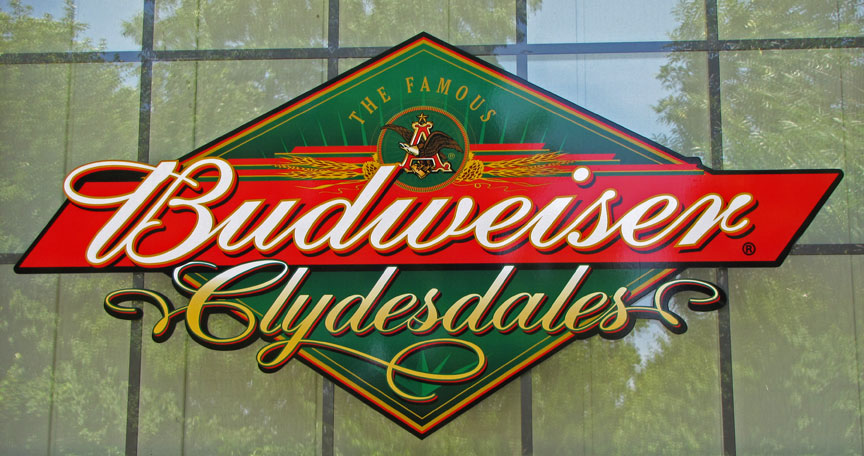
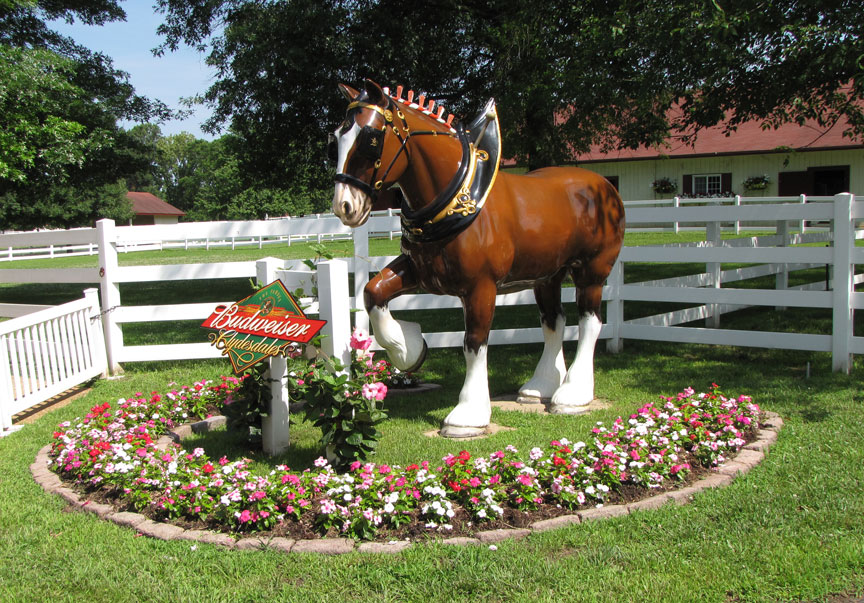
Budweiser Clydesdales
The Budweiser Clydesdales are a group of Clydesdale horses used for promotions and commercials by the Anheuser-Busch Brewing Company. There are six "hitches" or teams of horses, five that travel around the United States and one that remains in their official home at the company headquarters at the Anheuser-Busch brewery complex in St. Louis, Missouri, where they are housed in a historic brick and stained-glass stable built in 1885. There are eight horses driven at one time, but ten horses are on each team to provide alternates for the hitch when needed. Assorted Clydesdales are also used as animal actors in television commercials for Budweiser beer, particularly in Super Bowl ads.
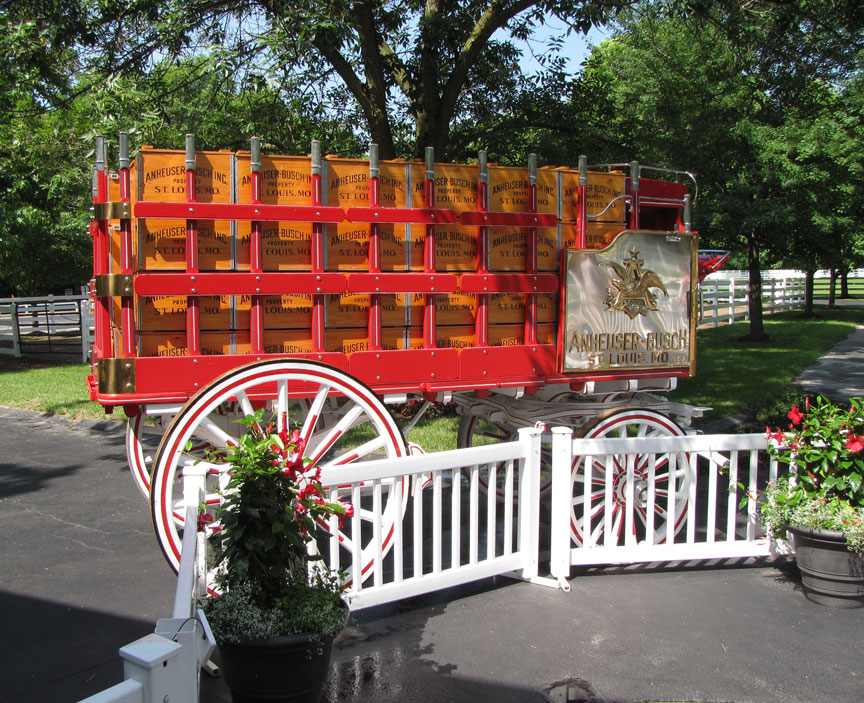
Many of the Clydesdales owned by Anheuser-Busch are raised at Grant's Farm near
St. Louis, Missouri. The Budweiser Clydesdale Stables at Grant's Farm house
approximately 35 mares, stallions and foals, with an average of 15 foals
produced each year. Anheuser-Busch owns a total of about 250 Clydesdales, kept
at various locations throughout the United States, one of the largest herds of
Clydesdale horses in the world. The second breeding farm is located near
Romoland, California, about 60 miles southeast of Los Angeles. Another 15 to 20
foals are born each year at the California farm. Additional Clydesdales are kept
at a facility near Fort Collins, Colorado. The company also buys high-quality
Clydesdales from other sources on occasion. Additional Clydesdales owned by
Anheuser-Busch can be seen by the public at many of the Anheuser-Busch theme
parks, including Busch Gardens in Williamsburg, Virginia and Tampa, Florida, and
at SeaWorld theme parks in Orlando, Florida, San Diego, California, and San
Antonio, Texas.
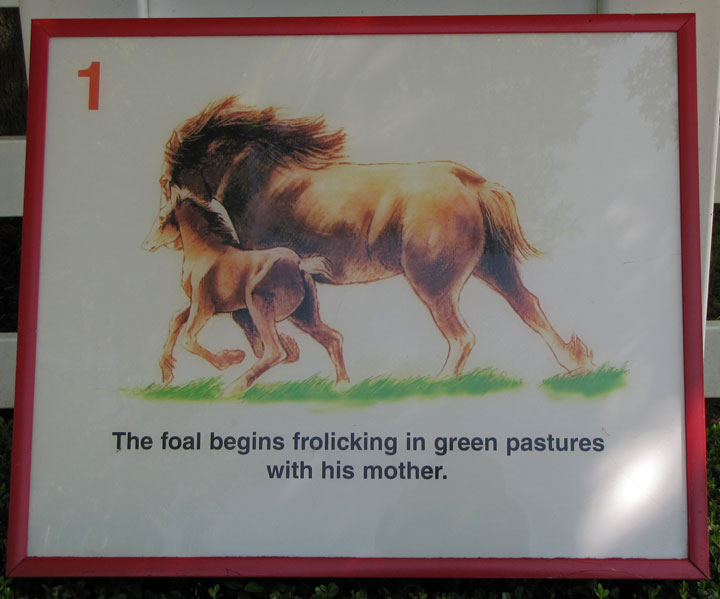
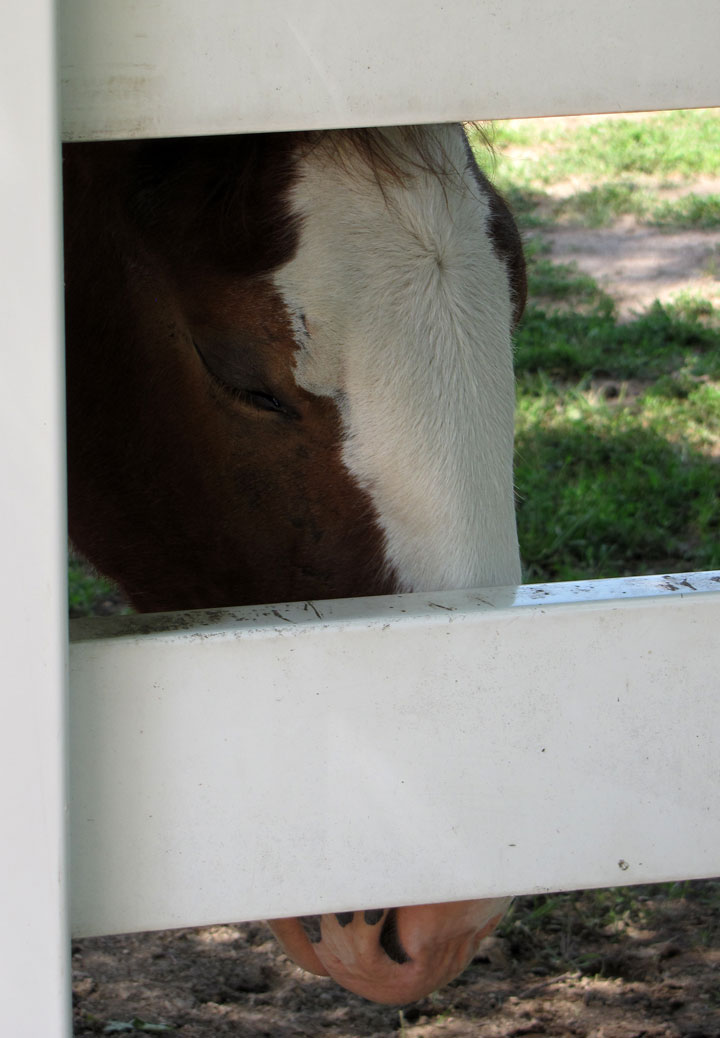
The Budweiser Clydesdales were first introduced to the public on April 7, 1933,
to celebrate the repeal of Prohibition. August A. Busch, Jr. presented the hitch
as a gift to his father, August Anheuser Busch, Sr., who was guided outside the
brewery by the ruse of being told his son had purchased him a new car, but
instead was greeted by the horses, pulling a red, white and gold beer wagon. The
hitch proceeded to carry the first case of post-Prohibition beer from the St.
Louis brewery in a special journey down Pestalozzi Street in St. Louis.


Recognizing the advertising and promotional potential of a horse-drawn beer
wagon, Busch, Sr. had the team sent by rail to New York City, where it picked up
two cases of Budweiser beer at New Jersey's Newark Airport, and presented it to
Al Smith, former governor of New York and an instrumental force in the repeal of
Prohibition. From there, the Clydesdales continued on a tour of New England and
the Mid-Atlantic States, a journey that included the delivery of a case of beer
to President Franklin D. Roosevelt at the White House.
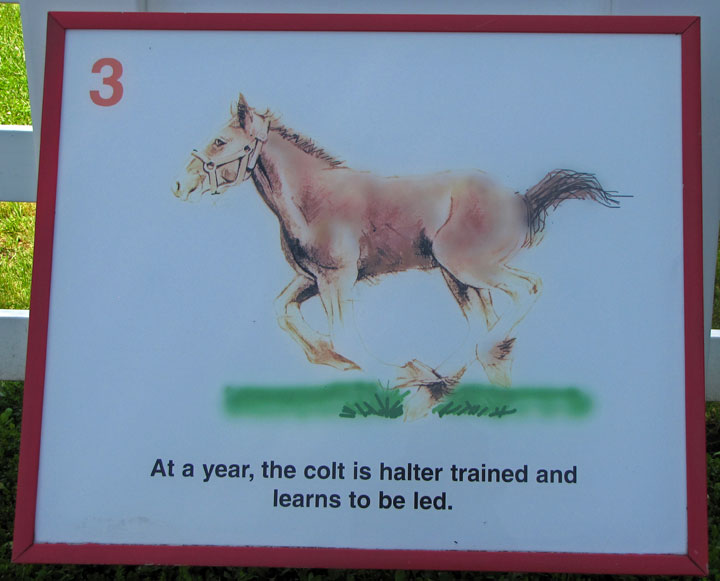
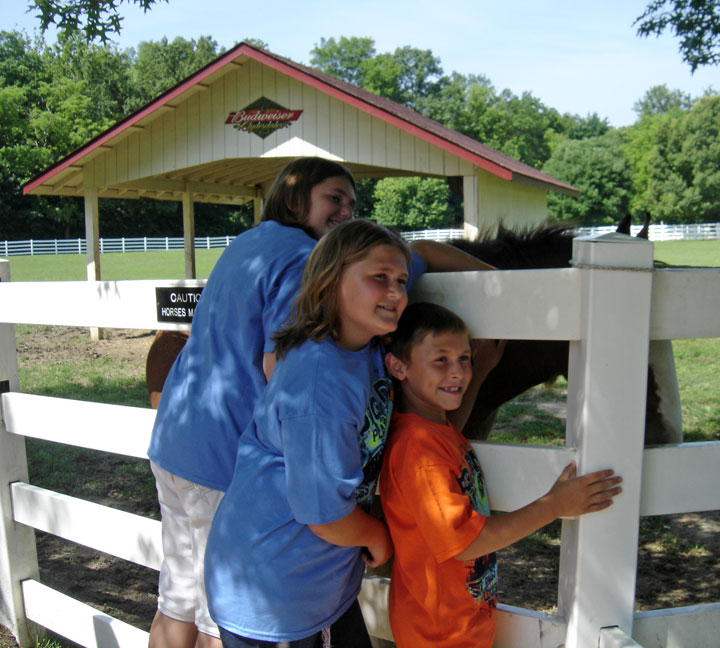
To qualify for one of the hitches, a Budweiser Clydesdale must be a gelding with
an even temperament and strong, draft horse appearance, be at least four years
old, stand least 18 hands (72 inches, or 6 feet) at the withers when fully
mature, and weigh between 1,800 and 2,300 pounds. In addition, each horse must
be bay in color (a reddish-brown coat with a black mane and tail), have four
white stocking feet, and a blaze of white on the face.
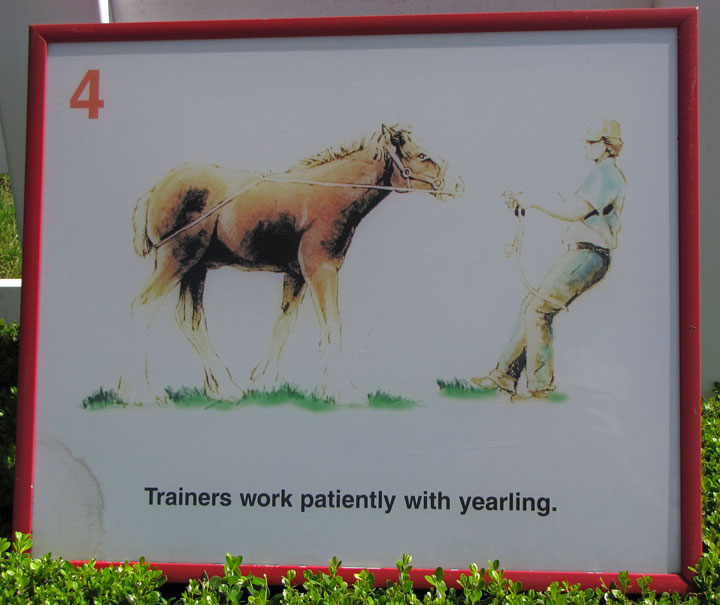
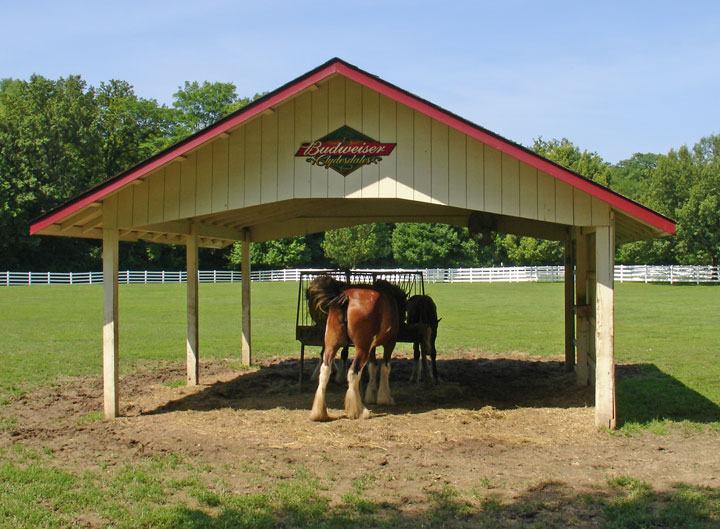
During the initial years on the road, the Clydesdales were transported by train.
Cross-country truck transport was introduced in 1940. Today, the traveling
hitches are on the road at least 10 months every year. They are based out of St.
Louis, Missouri, Menifee, California, San Diego, California, Merrimack, New
Hampshire and San Antonio, Texas. There are eight horses on each team, but ten
horses travel to provide alternates for the hitch as needed. Several
professional handlers accompany each team. Often, one handler has night duty to
provide round-the-clock care for the horses. Transportation for each hitch
requires three 50-foot semis. Two carry the horses, the third transports a red,
white and gold beer wagon and other equipment. The horses' comfort is enhanced
with air-cushion suspension and thick rubber flooring, and cameras in the
trailers enable the drivers to watch the horses during transport. The team stops
each night at local stables.
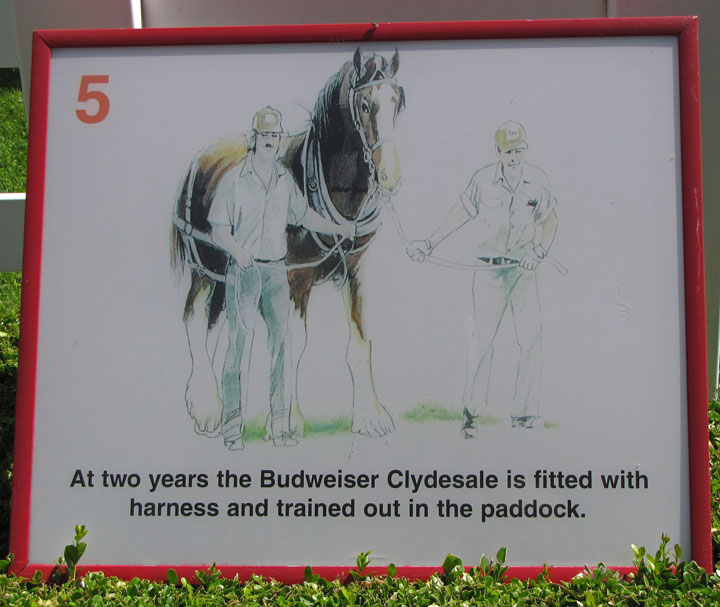
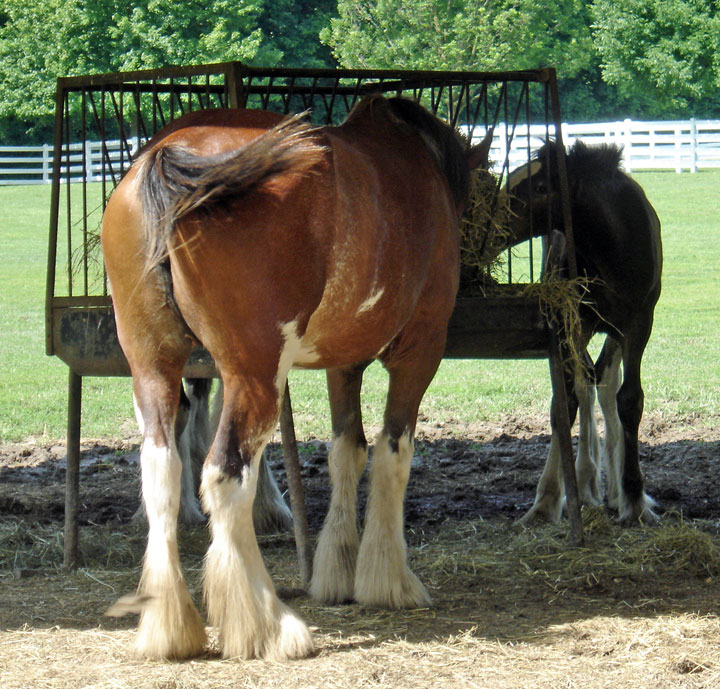
Two obedience-trained Dalmatian dogs also travel with each hitch, a Budweiser
tradition since the 1950s. Historically, the role of the dogs was to guard the
wagon and protect the team while the driver went inside buildings to make
deliveries. When the team performs today, the Dalmatians sit on wagon, seated
next to the driver. The wagons are Studebaker wagons modified to carry beer,
originally manufactured circa 1900.
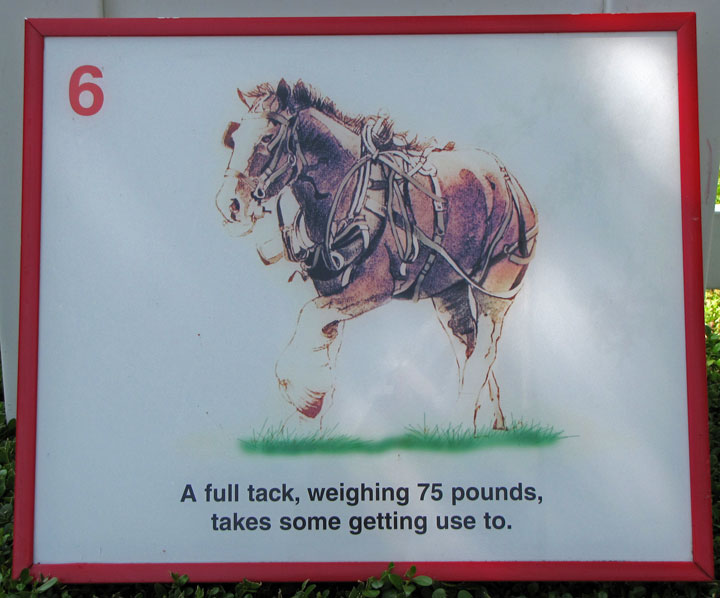
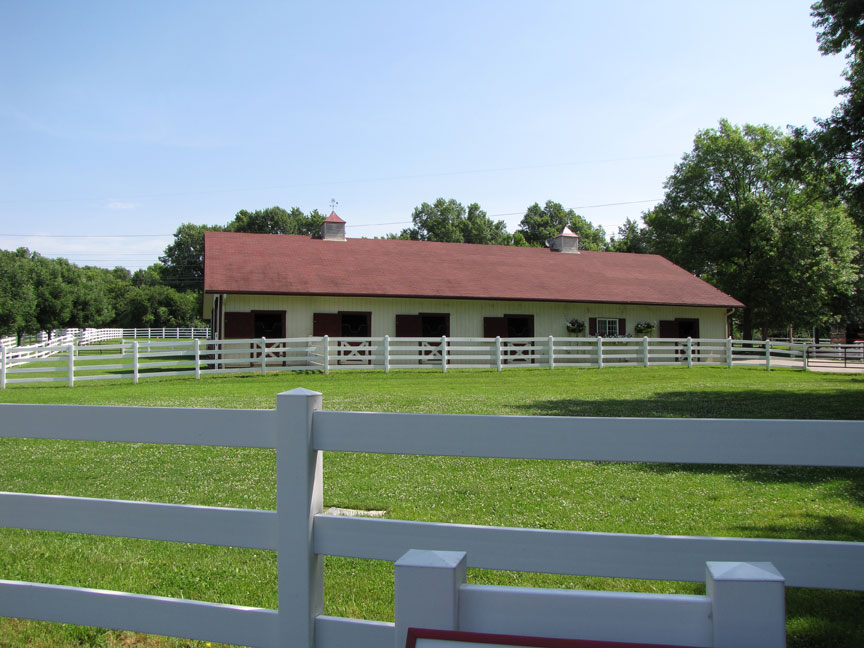
stable
Television advertising featuring the Budweiser Clydesdales had been a longstanding Super Bowl tradition. However, in 2010, the new parent company, Anheuser-Busch InBev, announced that there would not be a Clydesdales ad aired during the 2010 Super Bowl. However, the company reversed its position after asking fans to vote on Facebook whether to include the horses in an ad, compared against two other potential spots. As a result, the company aired a Clydesdale-focused ad during the fourth quarter, one of nine ads aired by the company during the game.
Text from Wikipedia

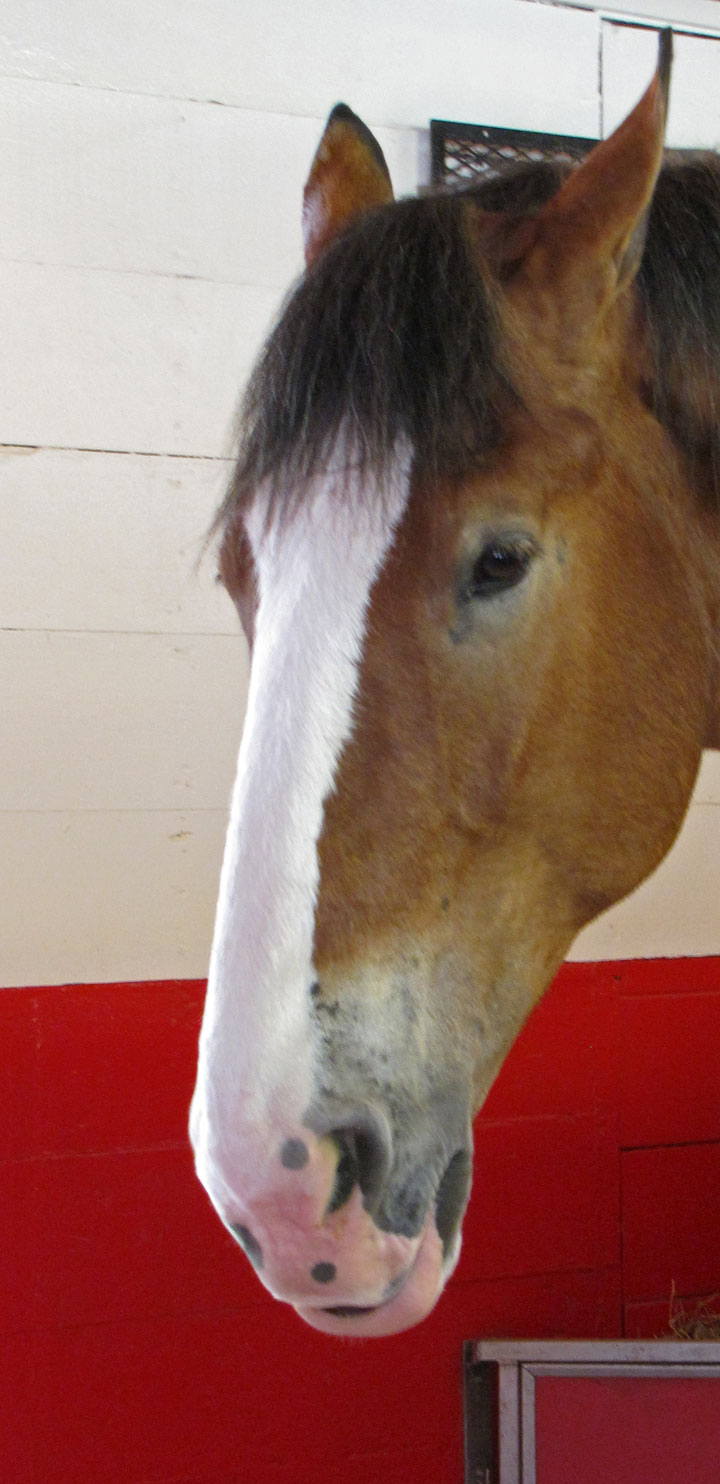
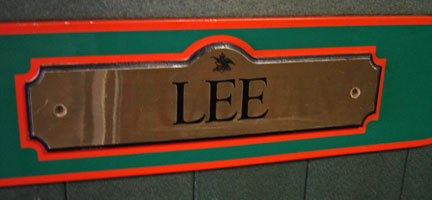
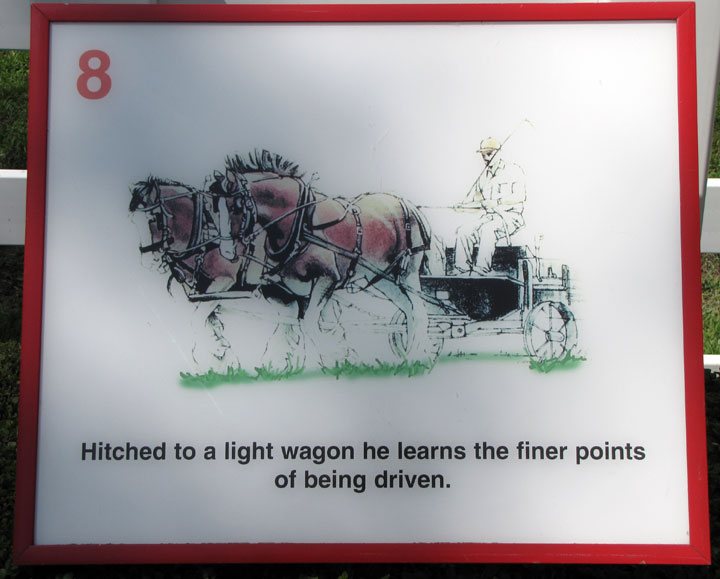
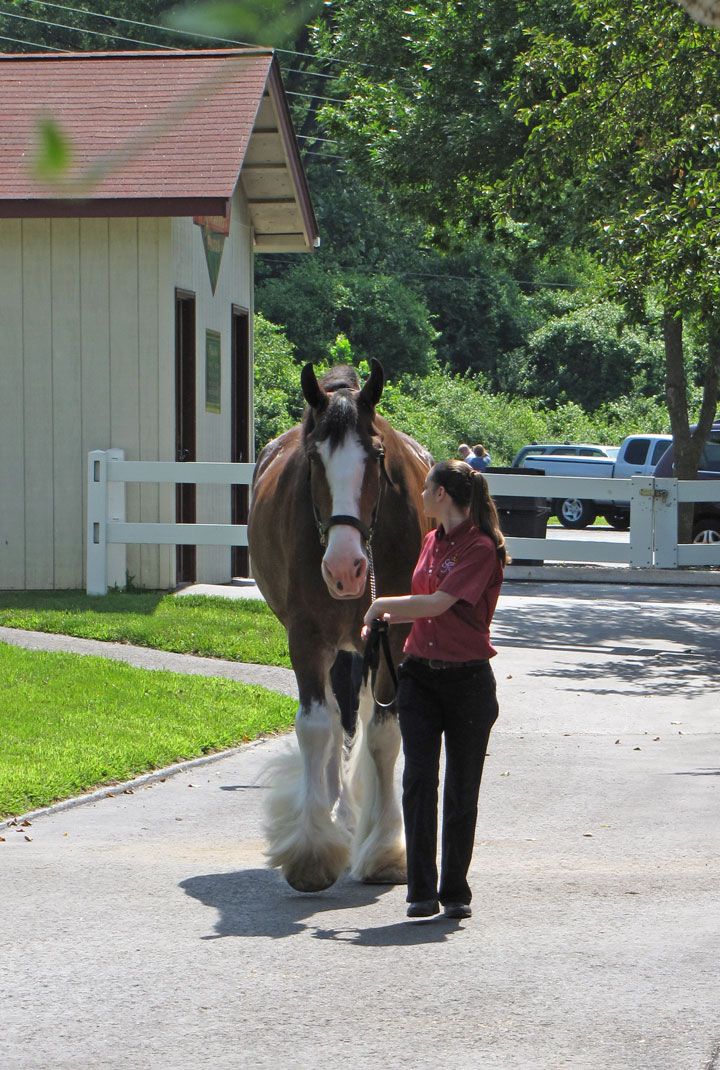
returning from photo booth

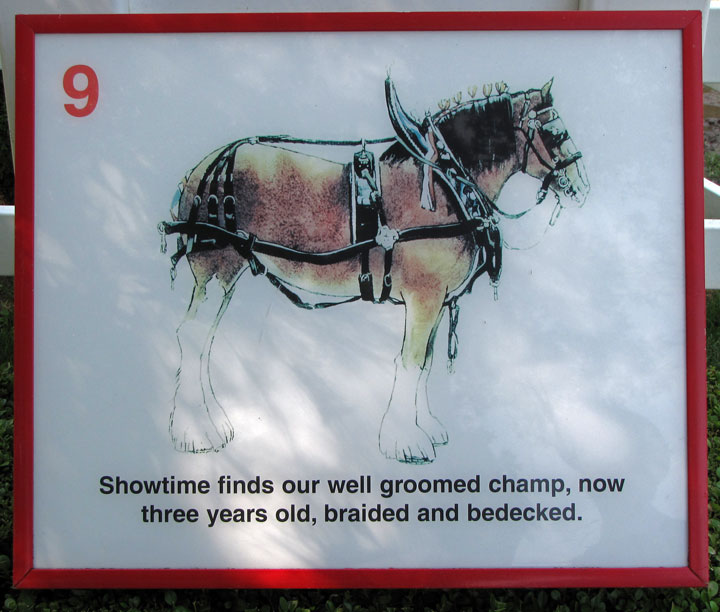

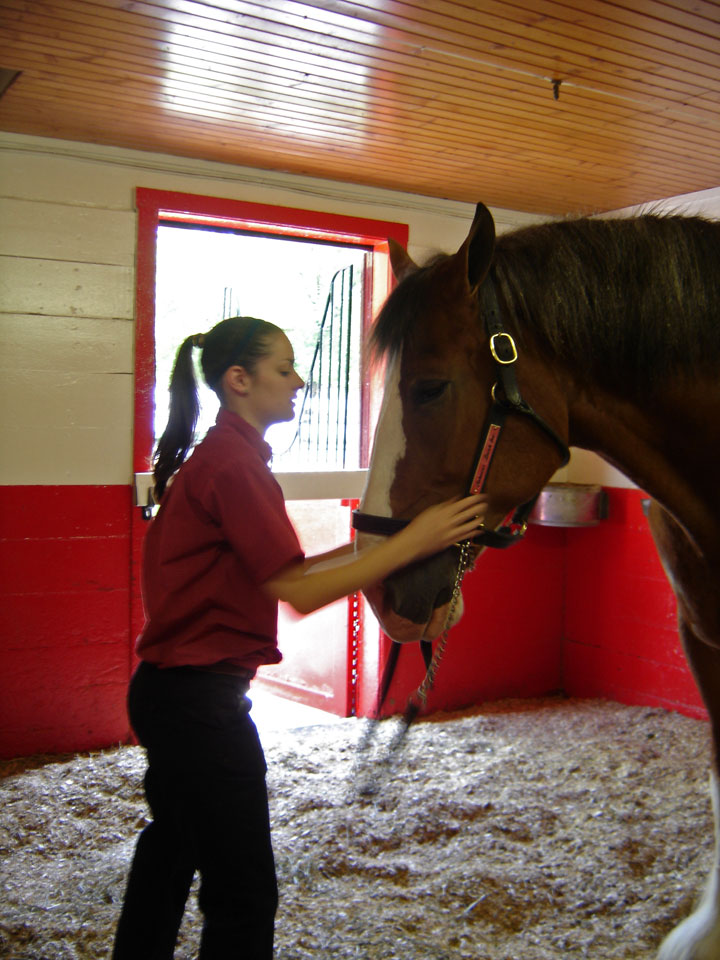
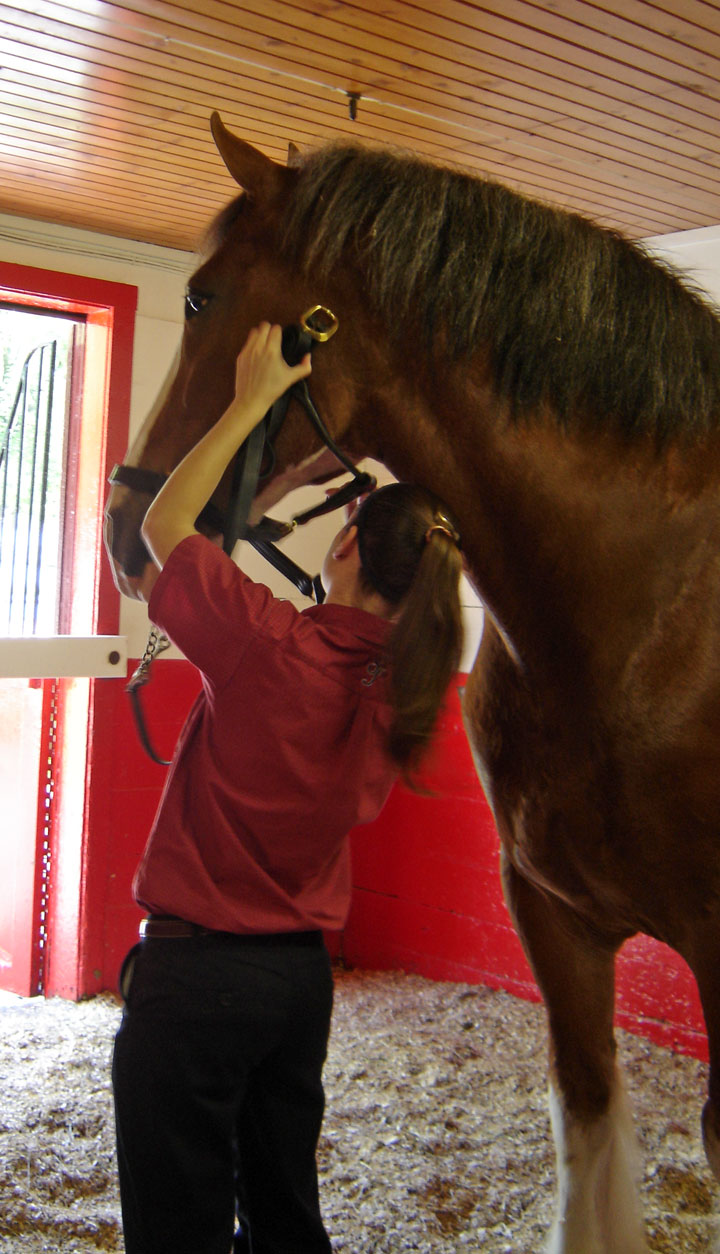
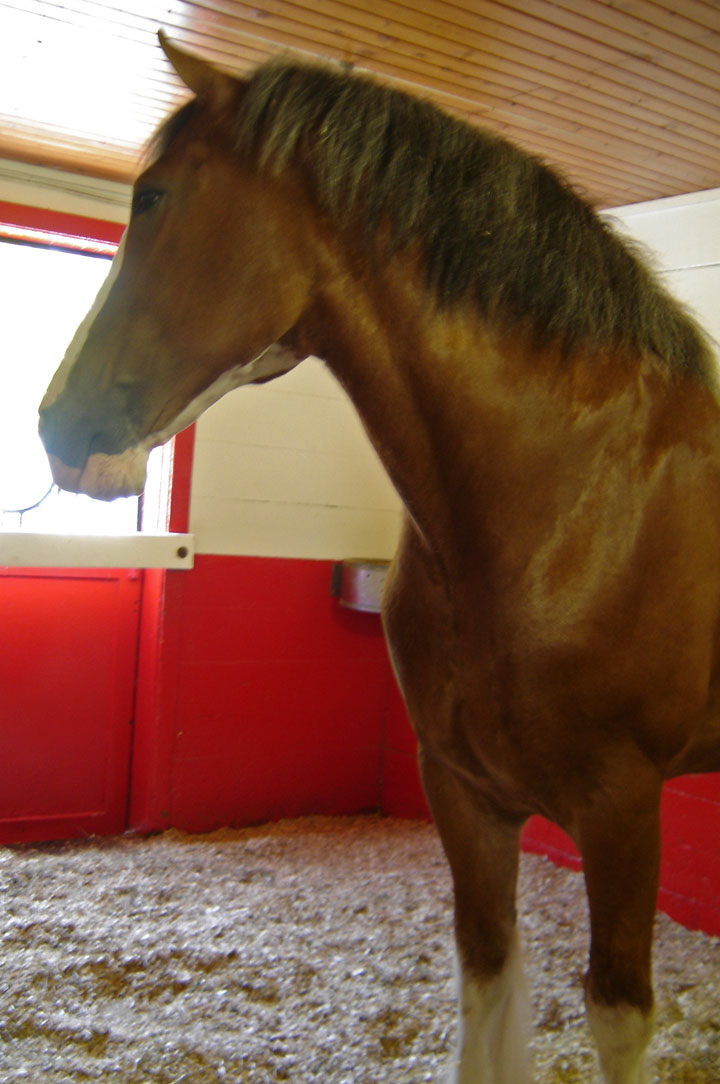
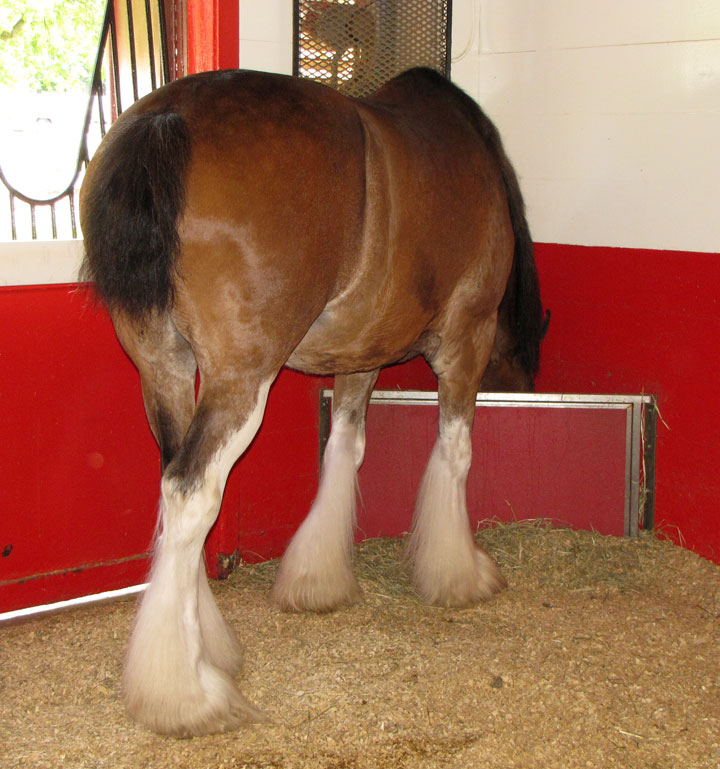
time for the oats

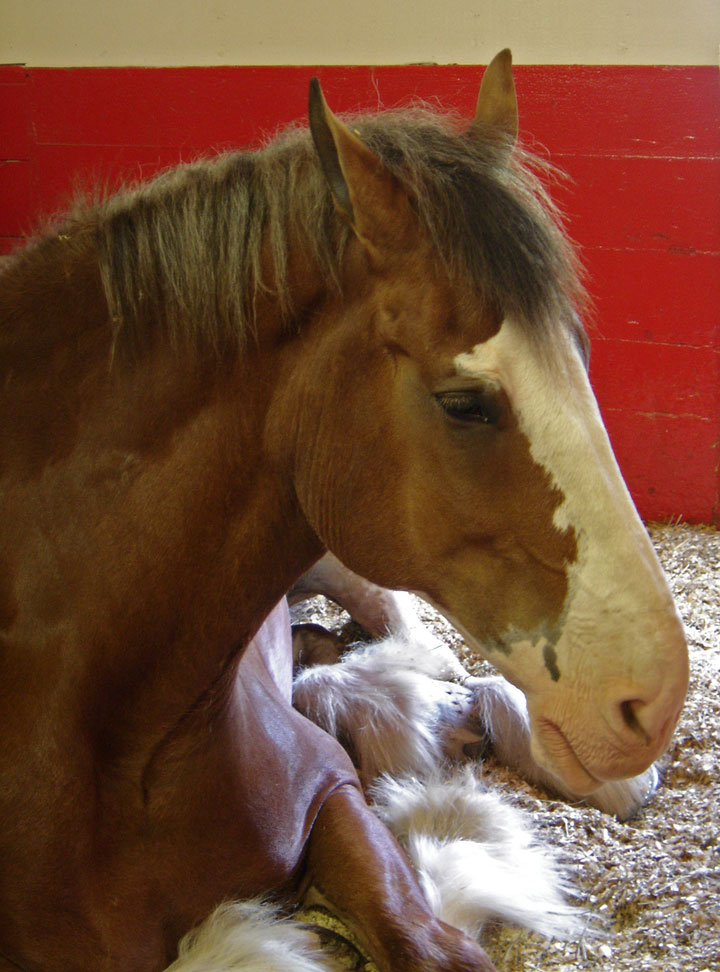
at the Brewery
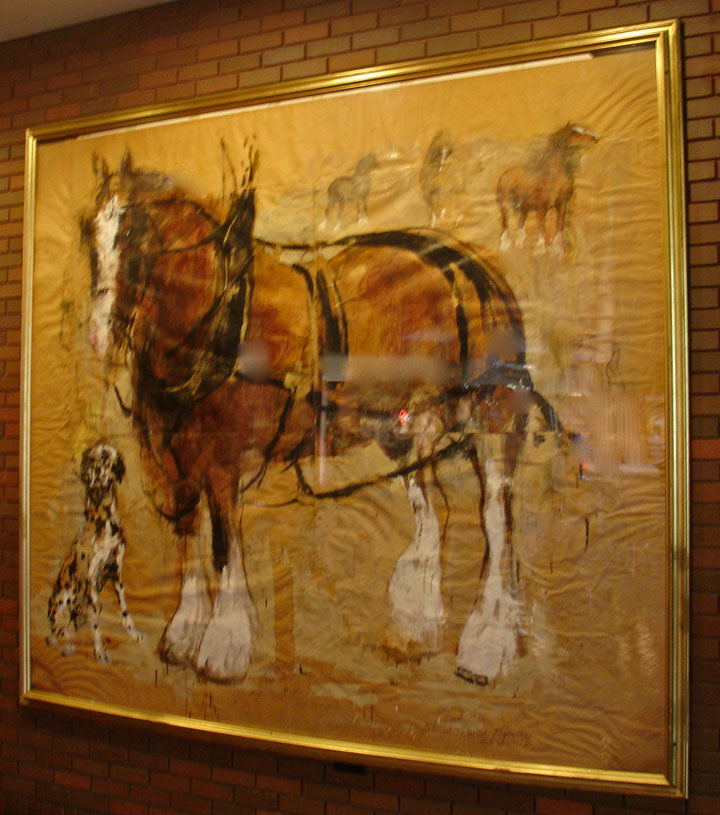
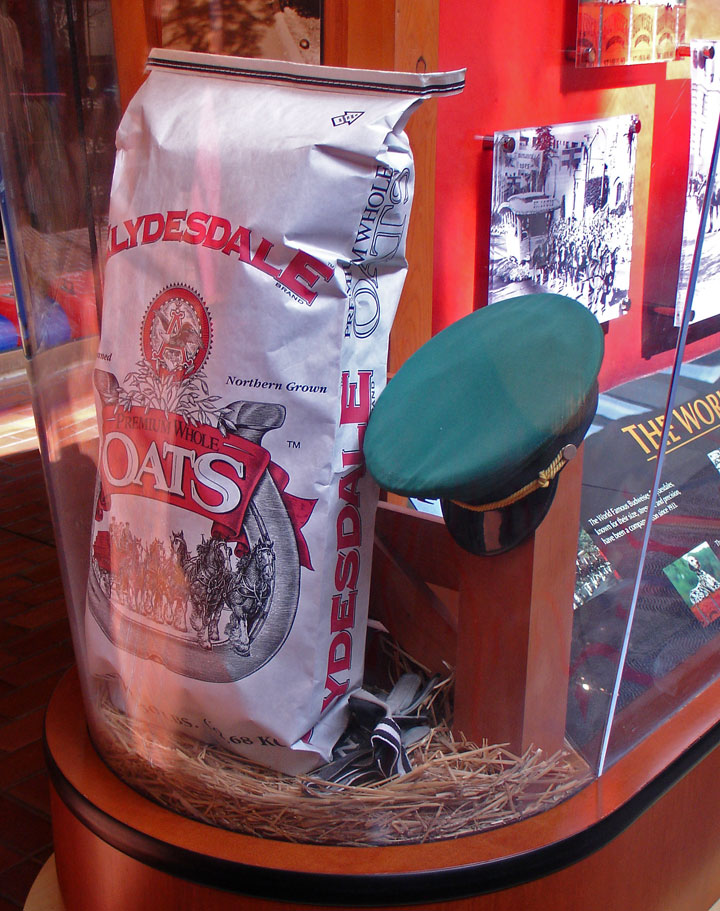
oats
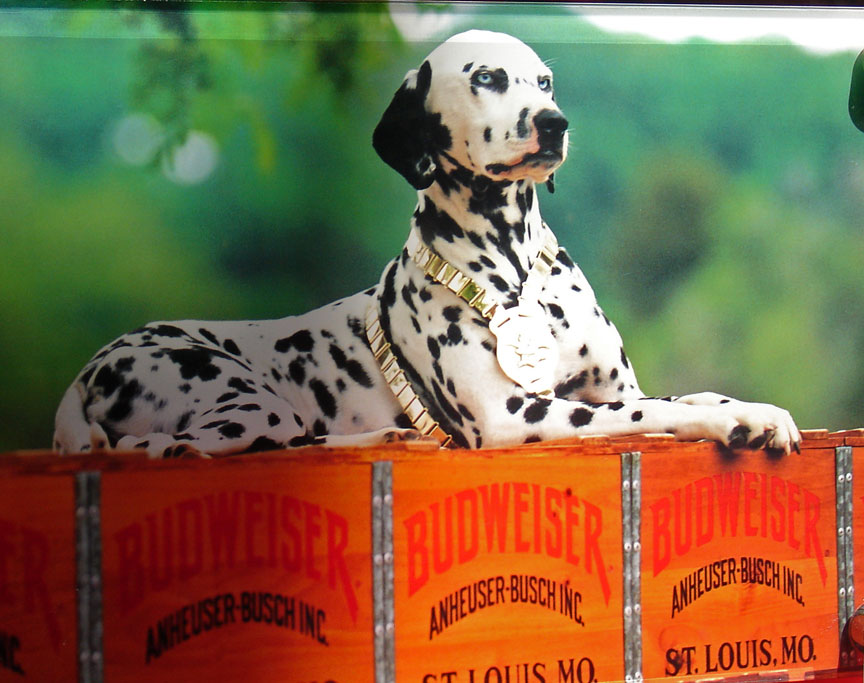
Dalmatian coach dog


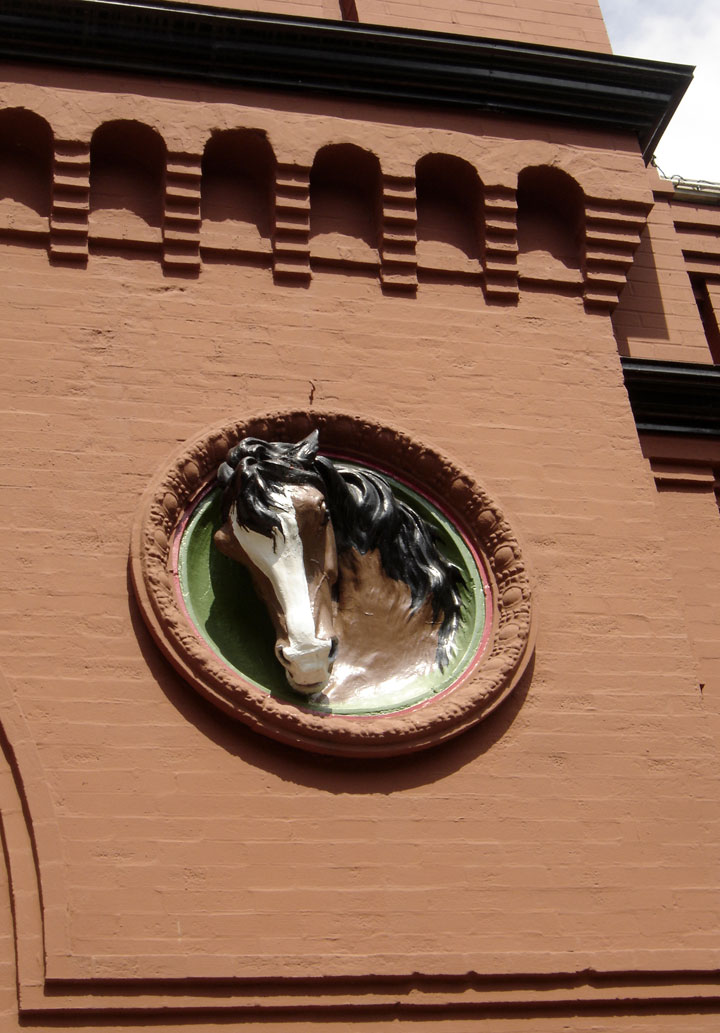

the stable
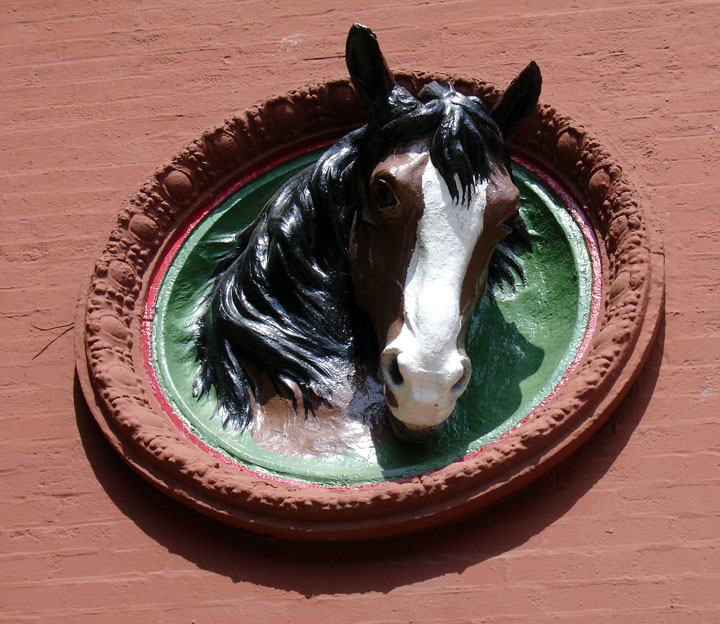
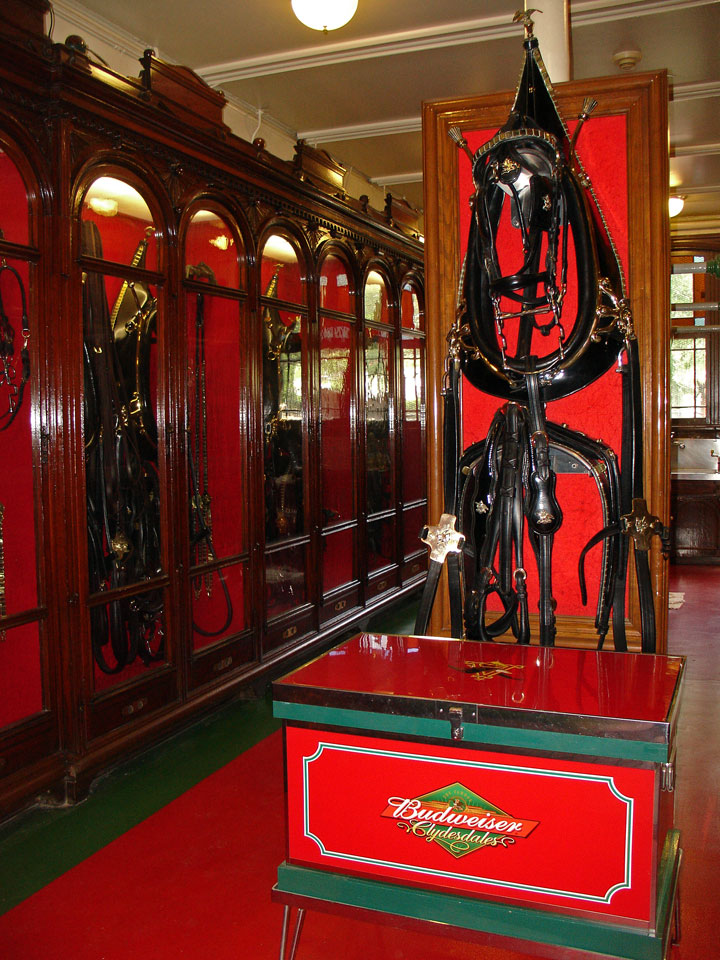
tack
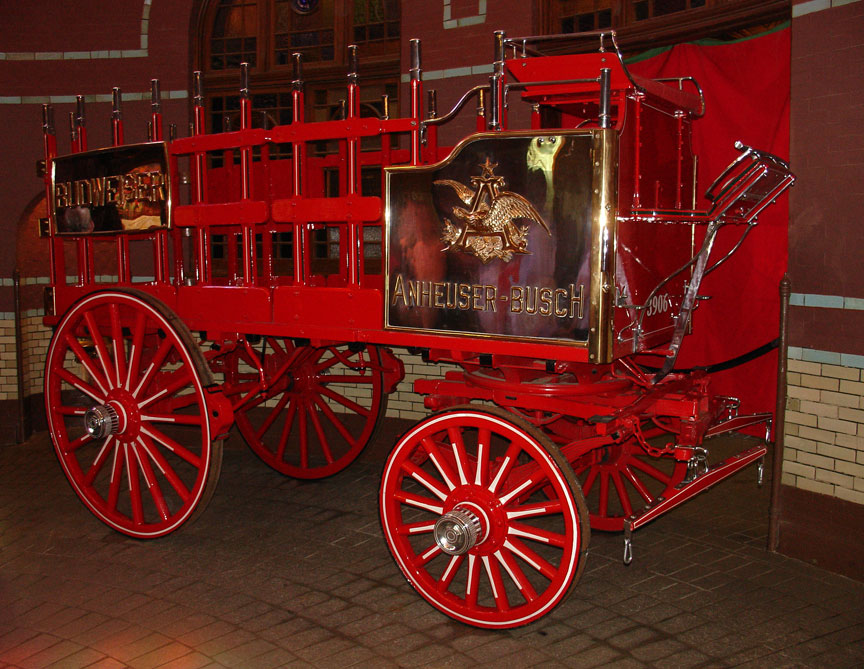
the wagon
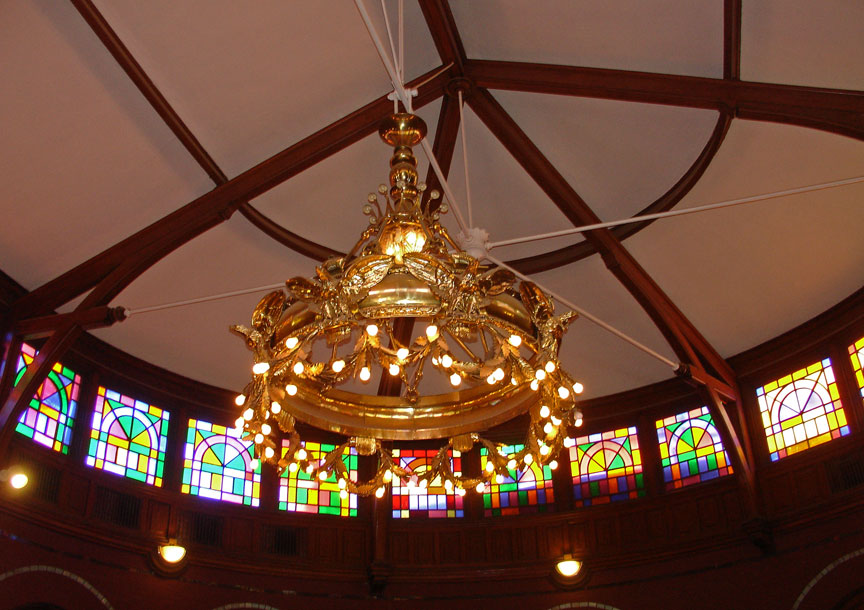
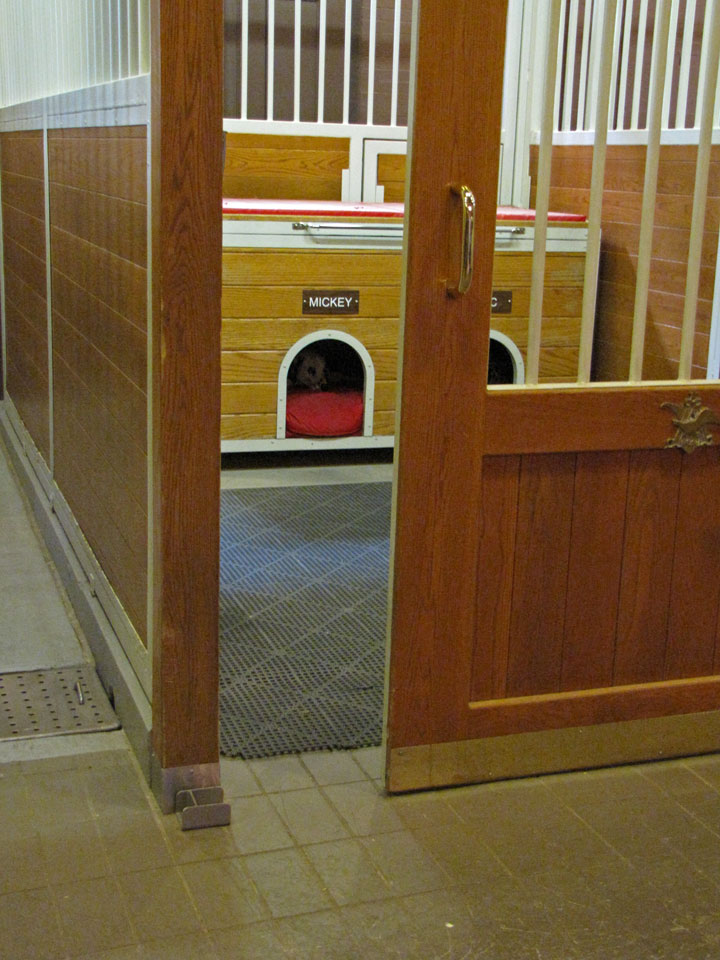
Dalmatian Dog kennel
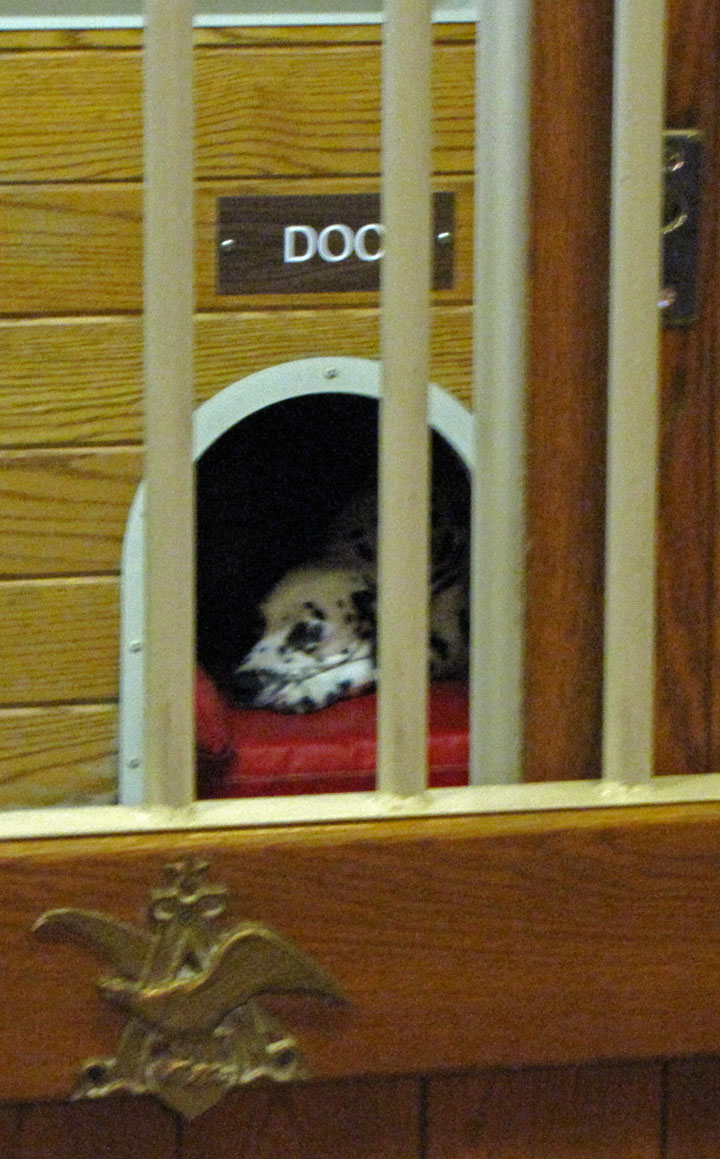
Doc

resting